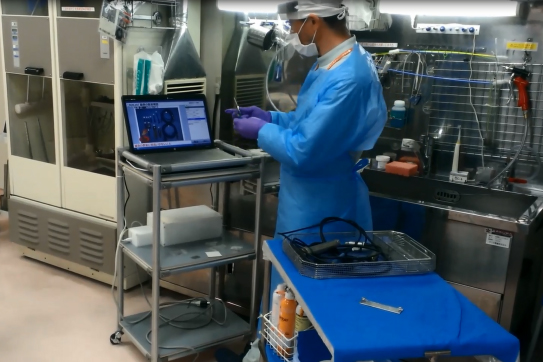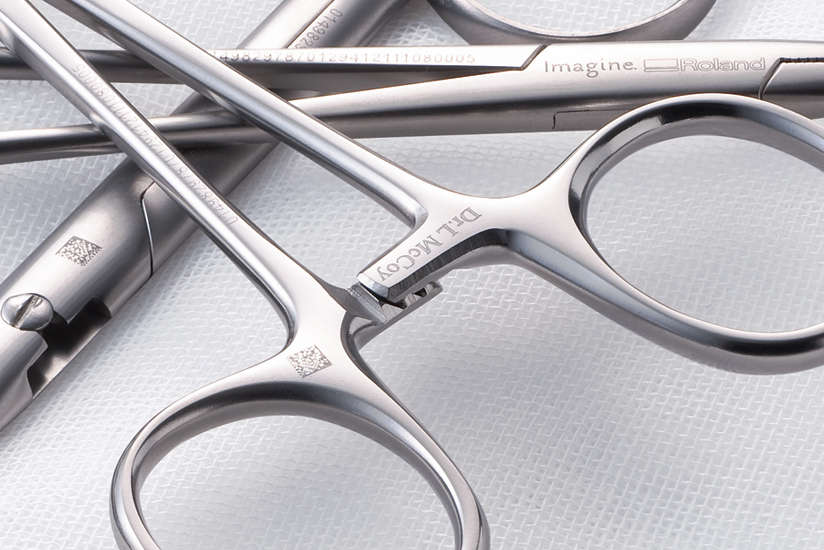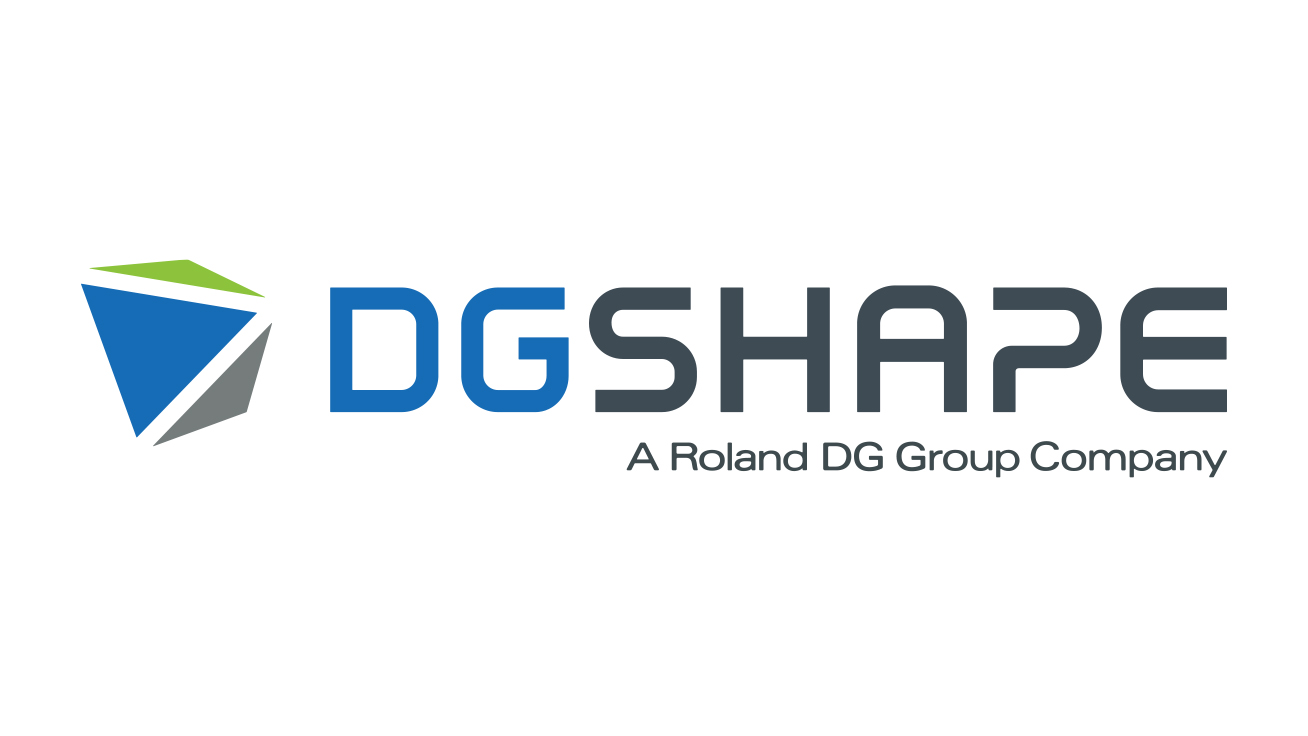Corporate News
12/16/2014
Roland DG Corporation
- Contacts:
-
Roland DG Corporation
Marketing Communications Section
+81 (0)53-484-1201
E-Mail:rdg-globalpr@rolanddg.co.jp
Roland DG and Hamamatsu University School of Medicine Collaborate on Medical Instrument Safety and Maintenance Support System Project; Selected as Proof of Concept by METI
Roland DG’s medical instrument marking technology and digitally-controlled cell-production system to serve as a model of new solutions in medical instrument management
Hamamatsu, Japan, December 16, 2014 – Roland DG Corporation, the world’s leading manufacturer of wide-format inkjet printers and 3D devices, announced that their medical instrument traceability and maintenance support system project, run in conjunction with Hamamatsu University School of Medicine, has been selected by the Ministry of Economy, Trade and Industry (METI) as a proof of concept among the "2014 Industry-Academia Evaluation and Pilot Projects" and will receive a grant to further pursue this project.
Working with the Hamamatsu University School of Medicine and its affiliated hospitals and clinics, Roland DG is using its MPX-90M*1 medical instrument marking device to secure traceability. Also, its digital YATAI*2 production system together with years of experience and knowhow are being put to use to raise the accuracy and efficiency of work involving the disassembly, sanitation, disinfection and reassembly of medical instruments, such as scalpels, tweezers, forceps and endoscopes. The aim is to build a model offering solutions to common issues experienced at all medical institutions.
-

Prototype of the digital work support system tailored for medical instrument maintenance
-

2D symbol imprinted on forceps with the MPX-90M
Seiji Yamamoto, MD, PhD, and head of the Collaboration Center for Medical Innovation at the Hamamatsu University School of Medicine, sees firsthand the issues inherent in maintenance and management of medical instruments at the university and its affiliated facilities. "Currently, all safety management for medical instruments is done according to a paper manual," explains Yamamoto. "Each employee needs to have a wide range of experience and knowhow, which leaves large gaps in the quality of work and opens the door for human error. We are keenly aware of the need to improve our system to reduce the burden on employees and maintain a higher standard of quality for our work. Moreover, there are many facilities out there that are not aware of inventory amounts and use history of medical instruments due to insufficient management systems. This has led to cases of lost or damaged instruments, or even surplus purchases."
Yamamoto, however, sees this project as a solution to these shortcomings. "The project we are working on with Roland DG will allow us to ensure the traceability of instruments and digitalize the maintenance processes, which we believe will increase the reliability of our work. In addition, we also hope to achieve more efficient and effective management of the hospital as a whole."
Kohei Tanabe, general manager of Medical Market, Market Development HQ of Roland DG, also has high hopes for the project. "Our company’s mission is ‘Bringing new opportunities to society through digital technology.’ We have used our digital XYZ-axis control technology, which mimics the movements of the human hand, and delivered value through digitalization to a wide variety of industries. Our medical business, newly formed in October 2013, has been focused on the important task of applying our accumulated technology and knowhow toward aiding medical services in saving lives and improving health."
"With this project, we are honored to be able to bring solutions directly to the hospital floor," Tanabe continued. "The traceability of medical instruments, maintenance of high quality standards and the safety of patients are some of the most important issues facing the medical industry, and we believe they will only grow more important going forward. While we are working with Hamamatsu University School of Medicine to make sure this project succeeds, we also hope to develop a system that can be used industry-wide and eventually bring value through digital solutions to medical facilities around the world."
Roland DG plans to complete a support system to be used by Hamamatsu University School of Medicine and its affiliated hospitals and clinics for the traceability and maintenance of surgical instruments by the end of March 2015. This will include imprinting 2D DataMatrix barcodes to ensure the traceability of medical tools and digital conversion of the paper manuals used for the cleaning and reassembly of endoscopes. Over the next year and beyond, Roland DG will continue to build the required knowhow regarding the application and commercialization of this project, and build a standard system for use on a wider-scale among other hospitals and facilities. In addition, the company will set up sales methods and channels, and starting in 2018, plans to develop a comprehensive system of solutions that can be sold to medical institutions, while continuing to present the results of the project through academic communities and industry publications.
As an evaluation model and pilot project, Roland DG’s initiative was built as a proof of concept. The main structure of the project is helmed by the university, which aims to build a PDCA cycle that outlines how to take issues identified by the university and solve them with the assistance of local industry, government and chambers of commerce and industry. The proof of concept model seeks to take the PDCA model and prove that the problem-solving functions of the industry-academia project can work for the average business. The process of proving this concept includes using the basis of preliminary benchmarks and the recognition of third-party organizations (such as industry-academia consortiums) to raise legitimacy and commercial viability.
Upon proving the concept behind this project, it will be evaluated by medU-net, the Japanese Association of Medical University Network for Technology Transfer along with a consortium headed by the Hamamatsu Chamber of Commerce and Industry, and if successful, receive their support. The ultimate goal is to energize cooperation between industry and academia, sparking continuous innovation that boosts local economies and eventually develops to boost the economy nationwide.
Project Background
In recent years, efforts have been spreading to review medical instrument safety and management procedures in order to reduce the risk of infection inside hospitals and ensure the safety of patients. A worldwide trend is materializing among regulatory bodies that seek to have a comprehensive management system for special instruments in use at medical facilities. In America, the FDA began an incremental launch of UDI (Unique Device Identification) Regulation in September of 2014, which requires marking identifiers on medical devices, and Europe and Asia are expected to adopt the same kinds of regulation within the next few years. In anticipation of these trends, Roland DG released the MPX-90M in 2012. The MPX-90M allows medical facilities as well as medical instrument manufacturers and suppliers worldwide to utilize a 2D symbol imprinted on each instrument to see a complete history of that tool, including available stock, location and times used.
At the same time, we have always thought the process of providing a medical facility with the MPX-90M could include using proven work support systems in place at Roland DG factories to raise the level of quality and efficiency involving post-operation tasks. The disassembly, sanitation, disinfection and reassembly of medical instruments cover many situations highly dependent on the experience of the employee and include complicated maintenance work across a wide variety of surgical tools.
As discussions continued, Roland DG worked through the industry-medicine joint research programs hosted by the Hamamatsu Chamber of Commerce and Industry to discover issues at Hamamatsu University School of Medicine related to the safety and management of medical instruments. Since 2013, our company has engaged in collaborative research aimed at solving these problems. Now, our joint initiative with the university has been selected by METI as a pilot project and proof of concept, which will push our activities forward in a significant way. This will be the first time our company’s digital YATAI work support system is used in a field outside of manufacturing. There is no global precedent for our objective to introduce a traceability management system and build a work support system based on digital manuals. However, we will do our utmost to transform technology and knowhow into a comprehensive system of medical solutions.
*1 About the MPX-90M
The MPX-90M is a desktop-size dot impact printer designed for the direct marking of medical instruments with UDI (Unique Device Identification) barcodes that make tracking and traceability possible. The MPX-90M quickly creates 2D DataMatrix barcodes to GS1* standards and imprints them with great precision on the surface of medical instruments in areas as small as one square millimeter. The machine uses dot pin marking to protect marked surfaces from erasure and corrosion. A vice secures the instrument while a laser pointer indicates the area to be marked, meaning that no special training is required.
* The GS1 DataMatrix is a standard for 2D symbols determined by the GS1 international body for barcodes, symbols and electronic data transfer, and it serves to give worldwide electronics manufacturers and medical facilities a way to display symbols on steel instruments. Information on item code, usage limits, lot number, serial number and more can be stored within 26 bytes and read using a special scanner.
*2 About Digital YATAI
Digital YATAI is a proprietary cell-based (one person, one cell) production system developed and in use at Roland DG. Workers confirm each assembly task on an electronic display, receive the necessary parts from an automatic rotating rack and assemble using the indicated electronic screwdriver. Measures are in place to ensure the correct parts and screwdriver are used each step of the way, and product quality checks are run at the completion of each task to guarantee quality of work. Digital technology is utilized to complement human memory and focus and achieving the utmost in quality and productivity. Log data from each cell is stored on a central server, allowing the floor manager to see work progress at a glance and analyze data to find ways to not only improve workflow in individual cells, but optimize productivity for the entire factory.



